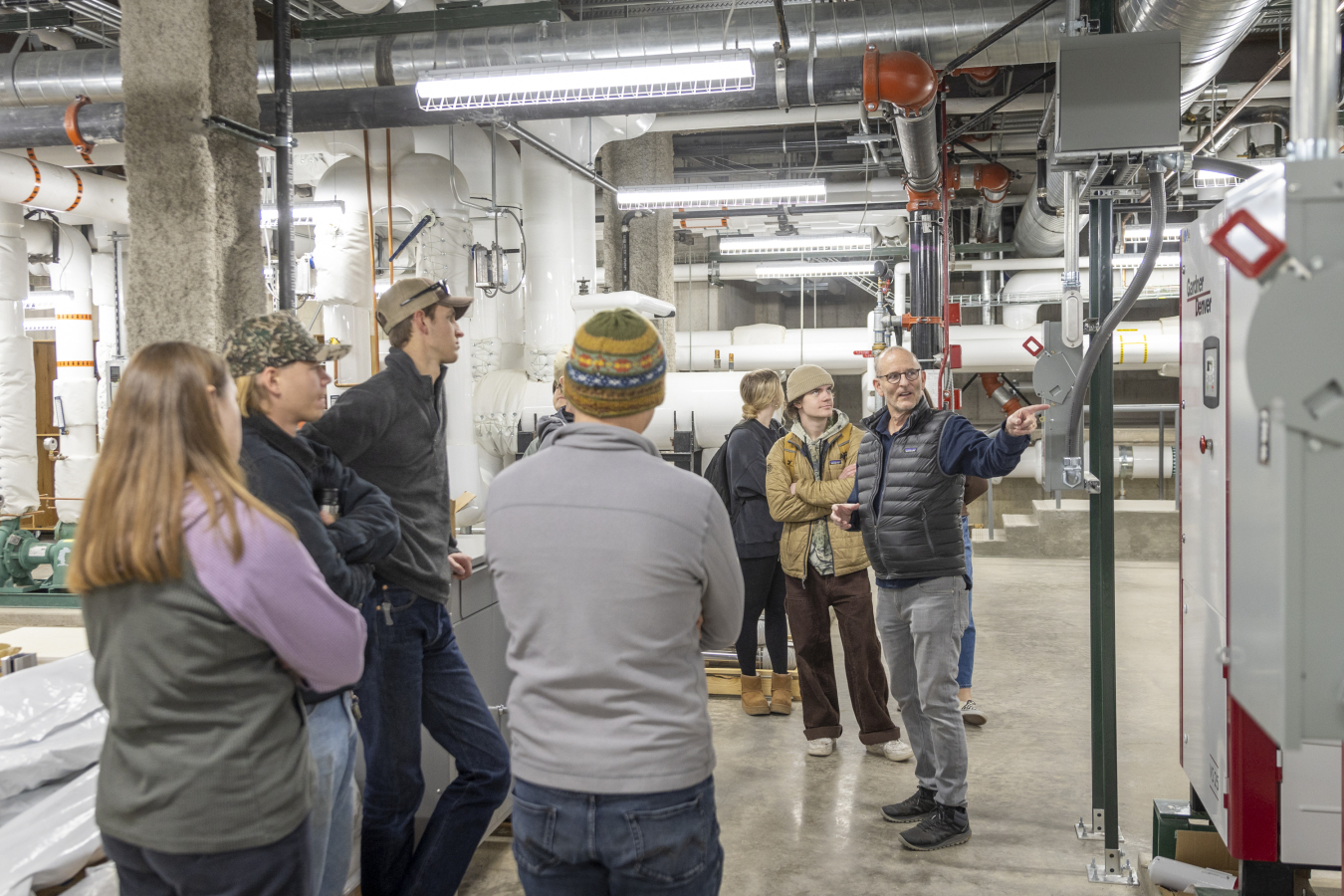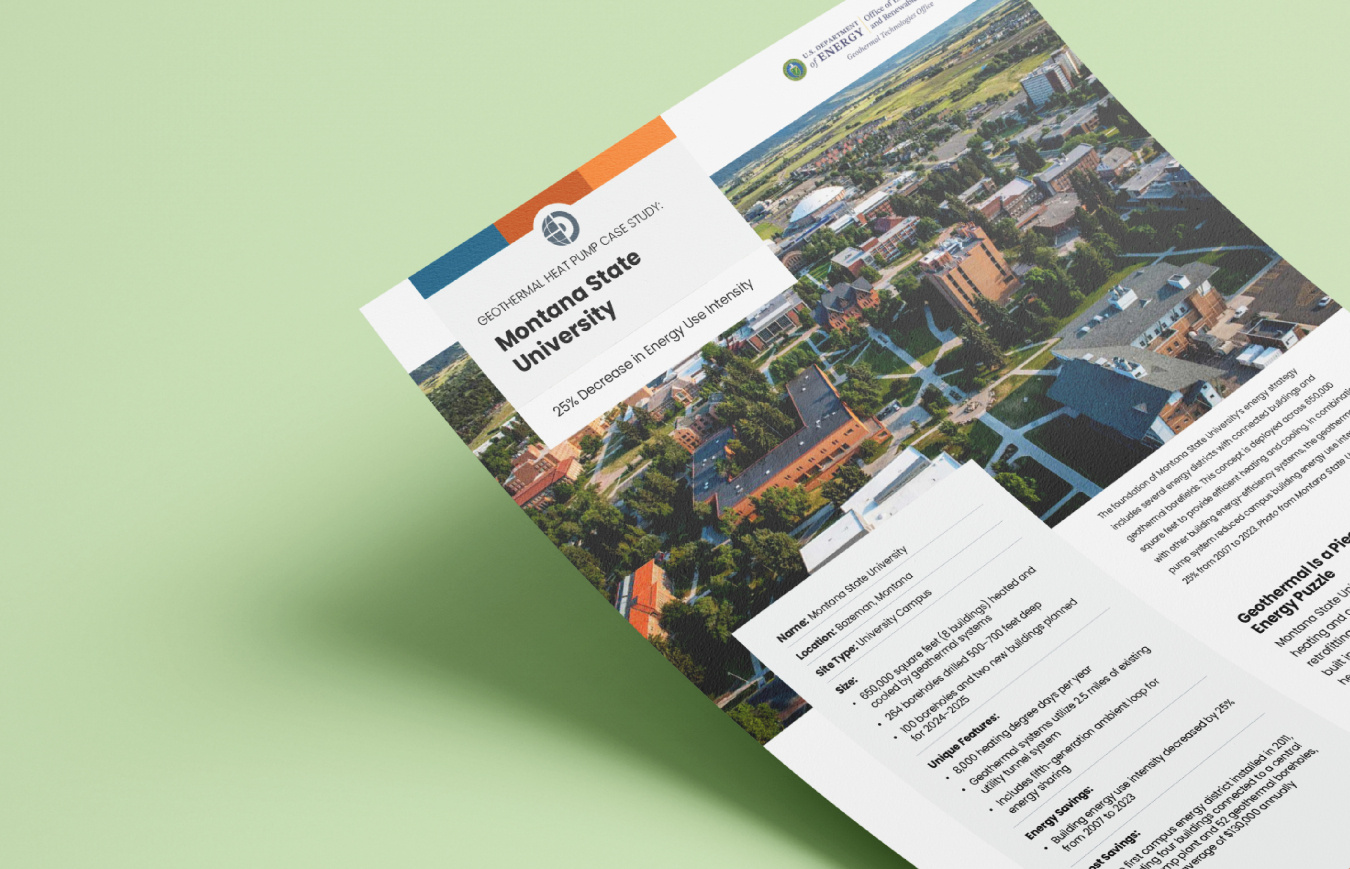The foundation of Montana State University’s energy strategy includes several energy districts with connected buildings and geothermal borefields. This concept is deployed across 650,000 square feet to provide efficient heating and cooling. In combination with other building energy-efficiency systems, the geothermal heat pump system reduced campus building energy use intensity by 25% from 2007 to 2023. Photo from Montana State University
Fast Facts
Location: Bozeman, Montana
System Size:
- 650,000 square feet (8 buildings)
- 264 boreholes drilled 500-700 feet deep
- 100 boreholes and two new buildings planned for 2024-2025
Download the full case study for additional fast facts.
Geothermal Is a Piece of the Energy Puzzle
Montana State University (MSU) started to rethink heating and cooling on campus in 2007 by retrofitting Leon Johnson Hall, a laboratory building built in 1976, with the university’s first geothermal heat pump (GHP). This retrofit allowed MSU to leverage energy that would otherwise be untapped.
In 2011, the university began to construct Jabs Hall on an adjacent site, eventually connecting four buildings and utilizing 52 geothermal boreholes—creating the first campus energy district. In 2017, another energy district was implemented in the south area of campus and connects two new classroom buildings as well as a new student wellness center. This south campus energy district has the potential to connect 10 buildings using existing utility tunnel infrastructure.
A Growing Network
MSU’s campus energy district systems have a total of 264 boreholes and 56 miles of piping installed, with another 100 boreholes planned for 2024-2025. One of the energy district systems uses a fifth-generation ambient loop to allow energy sharing between buildings and geothermal borefields. Excess heat from busy classroom buildings will be used to warm up other spaces, such as the pool in the new wellness center. This transfer of energy is a key benefit of a district heating and cooling system.

Montana State University’s district energy system acts as a living laboratory for campus facilities professionals, engineers, and students—a hands-on learning opportunity to study and improve energy-efficient building design, right beneath their feet. Photo from Montana State University
Energy Savings:
- Building energy use intensity decreased by 25% from 2007 to 2023
Cost Savings:
- The first campus energy district saves an average of $130,000 annually
Campus-Wide Benefits
MSU uses the geothermal heat pump systems not just for heating and cooling, but as a learning opportunity. Every year 1,000 students tour the MSU utility tunnels and building mechanical spaces to learn about campus energy systems. Graduate students frequently wrestle with “real-world” campus problems as part of their degree programs, subsequently informing campus-wide engineering and building decisions.
As a state-funded institution, MSU navigates a complex process to identify and seek funding for cost-effective, resilient, and energy-efficient building and infrastructure systems. MSU’s systems-oriented approach and integration of the geothermal energy district into campus activities is a model for a resilient system that benefits everyone on campus.
“A geothermal heat pump system achieves many goals through deployment of a proven technology. We are pleased to see how the building- and utility-level approaches being implemented today will reshape the campus, commercial buildings, and neighborhoods throughout Montana.”
Megan James, Montana State University, Director of Engineering and Utilities
Contacts:
For questions about this case study, contact Megan James, megan.james2@montana.edu.
For any website technical issues or general questions about geothermal heat pumps, contact DOE.Geothermal@ee.doe.gov.
Printable Version
Download the printable Montana State University case study or visit the Geothermal Heat Pump Case Studies page to see more examples of geothermal heat pumps in action.


